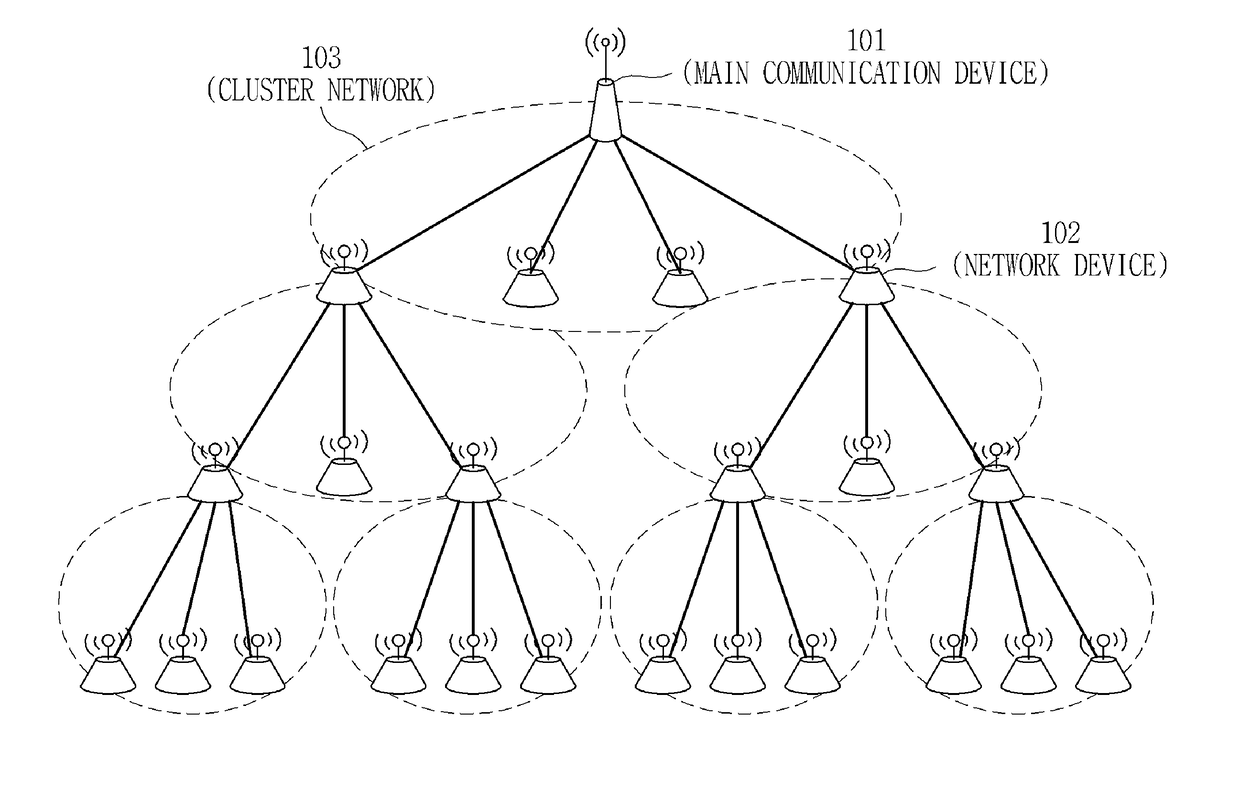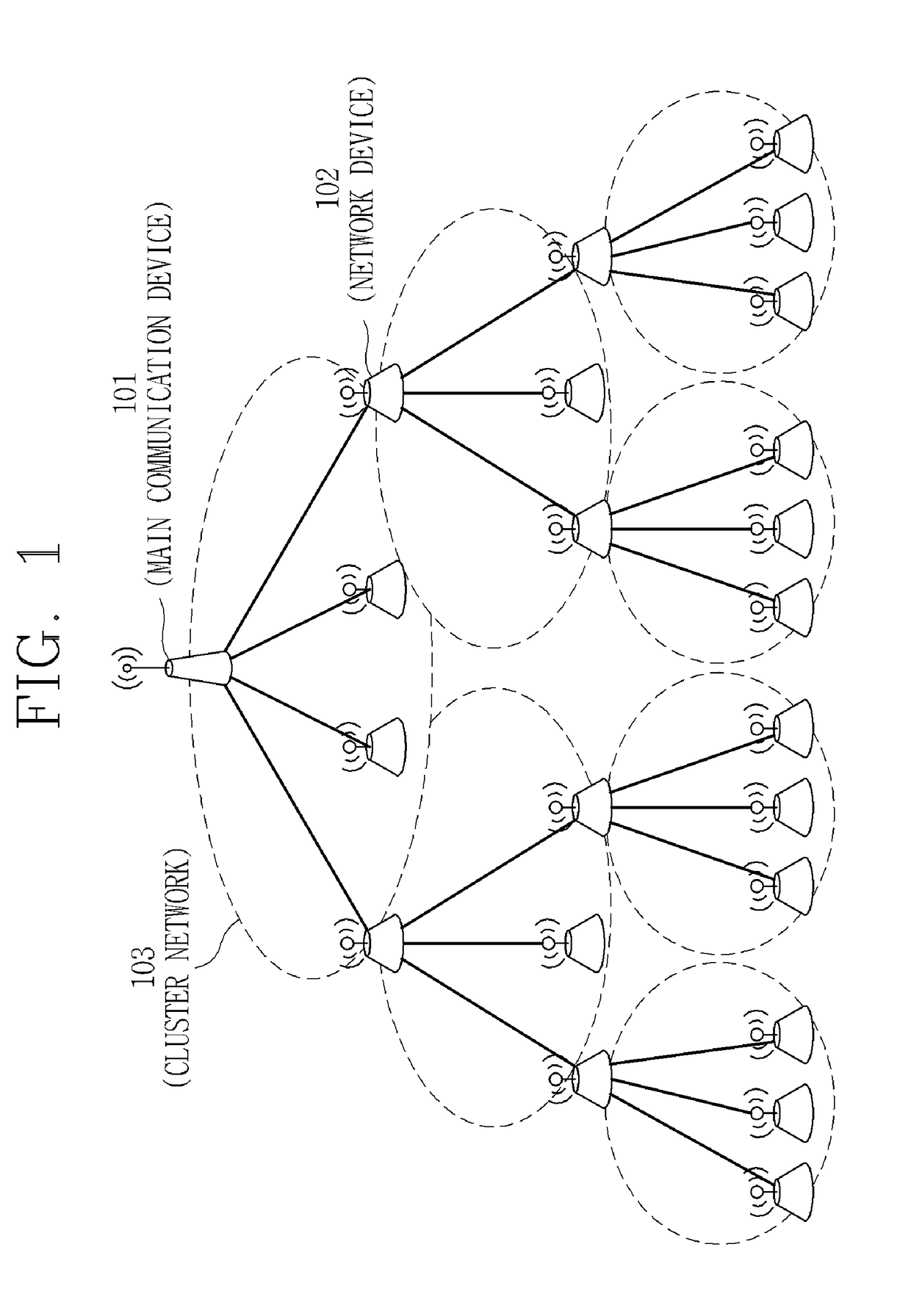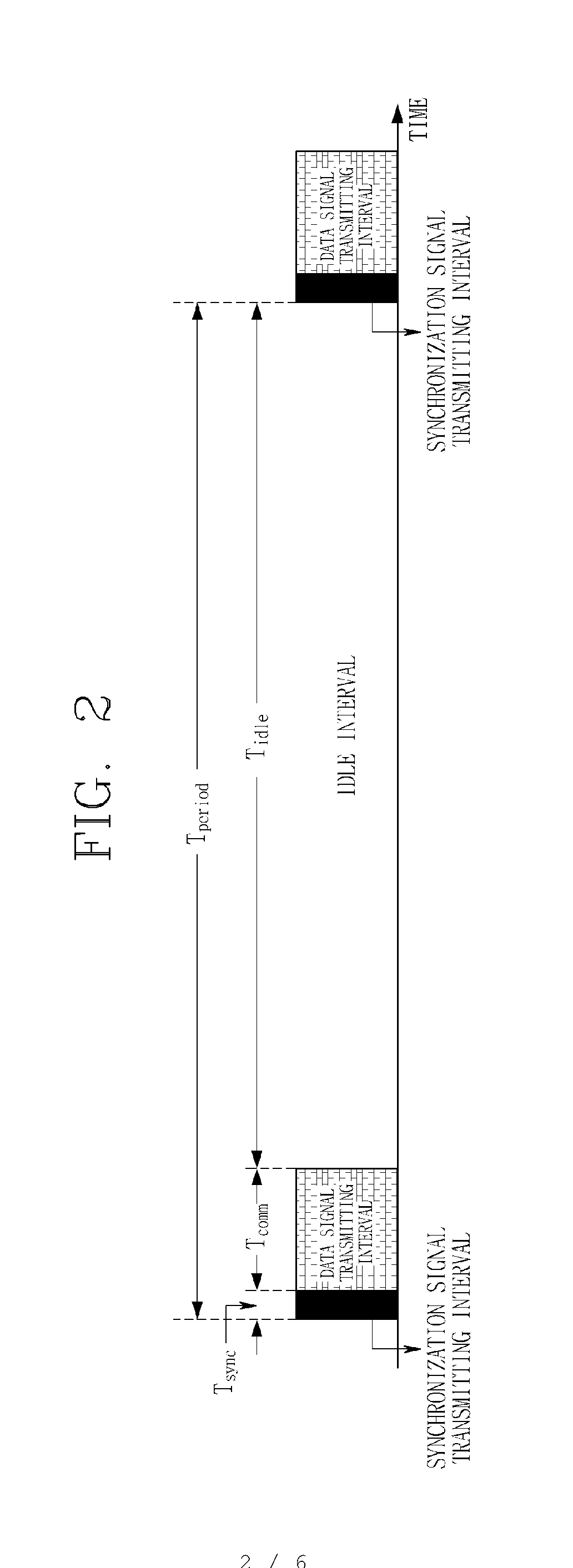Method for Transmission of Synchronization Signal in a Cluster-Tree Structured Wireless Communication System
a structured wireless communication and synchronization signal technology, applied in the direction of synchronisation arrangement, transmission monitoring, high-level techniques, etc., can solve the problems of network devices experiencing severe power consumption and performance degradation, beacon signal transmission performance may remarkably deteriorate, and the effect of poor power efficiency
- Summary
- Abstract
- Description
- Claims
- Application Information
AI Technical Summary
Benefits of technology
Problems solved by technology
Method used
Image
Examples
Embodiment Construction
[0023]Hereinbelow, exemplary embodiments of the present invention will be described in detail with reference to the accompanying drawings. In the description of the present invention, certain detailed explanations are omitted when it is deemed that they may unnecessarily obscure the essence of the invention. All terms which are used herein should be construed as having meanings that are obvious to one of ordinary skill in the art. However, the terms may have different meanings according to an intention of one of ordinary skill in the art, precedent cases, or the appearance of new technologies. Thus, the terms used herein have to be defined based on the meaning of the terms together with the description throughout the specification.
[0024]Hereinafter, ‘CH’ denotes a cluster head.
[0025]For convenience of description, a cluster-tree structured wireless communication system including one main communication device, referred to an access point (AP), 101 that manages the wireless communicat...
PUM
 Login to View More
Login to View More Abstract
Description
Claims
Application Information
 Login to View More
Login to View More - R&D
- Intellectual Property
- Life Sciences
- Materials
- Tech Scout
- Unparalleled Data Quality
- Higher Quality Content
- 60% Fewer Hallucinations
Browse by: Latest US Patents, China's latest patents, Technical Efficacy Thesaurus, Application Domain, Technology Topic, Popular Technical Reports.
© 2025 PatSnap. All rights reserved.Legal|Privacy policy|Modern Slavery Act Transparency Statement|Sitemap|About US| Contact US: help@patsnap.com



